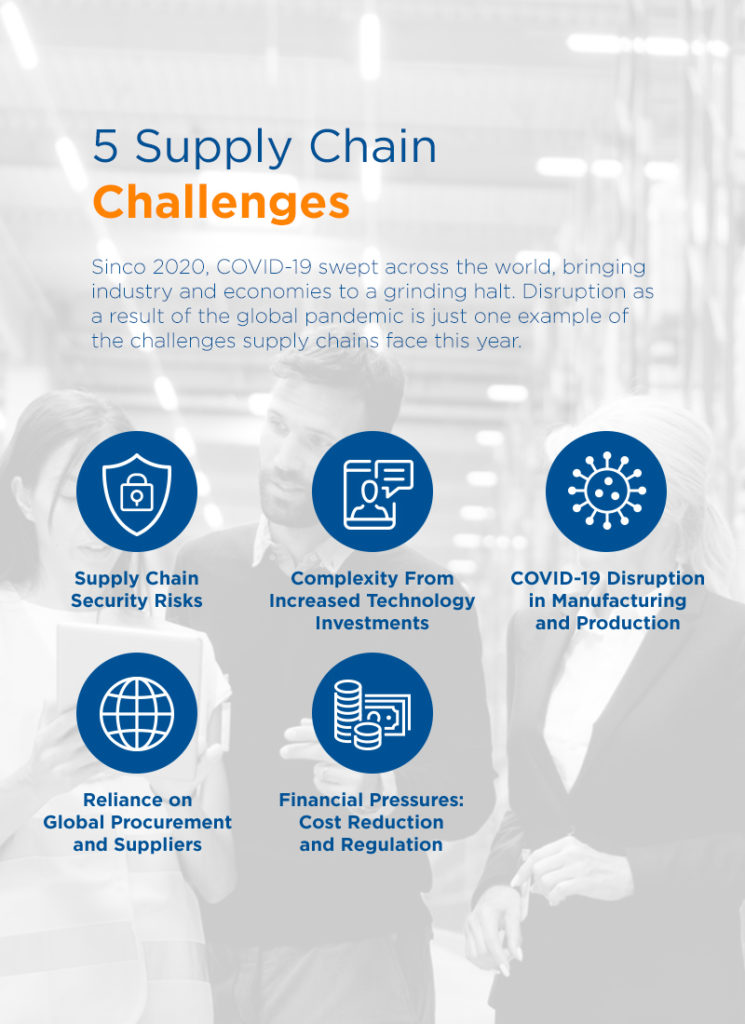
Supply chain management is a structured process that allows company’s to plan operations, source materials, produce and distribute products as well as support its customers in the aftermarket arena. The parts of a supply chain include:
- Design and approval: Engineering, Operations and Supply Chain work through an intensive and often iterative process to coalesce around an approved product design which meets the customer requirements. Cost and performance are balanced to produce an optimal design.
- Planning: After design approval, the next step of the supply chain management operation is the planning process, during which a company determines all of the internal and external inputs along with the required timelines to get the products or service to market.
- Sourcing: During the sourcing process, companies thoroughly evaluate the suppliers production capability, capacity, Quality and Delivery performance as well as the cost of the materials. Suppliers who top rank during the evaluation process are often selected to partner with the organization to provide the materials used to produce the finished goods.
- Production and manufacturing: The manufacturing phase encompasses everything needed to create the product, including testing the specified performance of the product. The manufacturing process often involves coordination of multiple special process suppliers. The manufacturing process is continuously reviewed for optimization utilizing both Lean and Six Sigma tools.
- Monitoring: Monitoring means tracking the individual process to ensure compliance in multiple areas, such as Quality, production timelines, Delivery to purchase order dates, finance, information technology and human resources.
- Aftermarket: Supporting the customer’s needs after the sale represents up to 50% of the total acquisition cost to the customer. Responsiveness and reliability are paramount in maintaining a customer’s readiness to complete their mission.
As there are many moving parts in the supply chain, issues and challenges can come up at various points. Understanding what challenges global supply chains might face and which trends are imminent can help your business anticipate and plan for success.
Global Supply Chain Trends
In the aviation and defense industry, supply chains are often complex, involving multiple partners and suppliers. Global supply chains are continually evolving and adapting as a result of global events and changes in the larger world. Several issues will be at the forefront of supply chain management, including finding ways to reduce or manage risk, increasing stability and embracing digital tools. A few global supply chain trends to pay close attention to include:
1. Risk Mitigation
Risk has multiple meanings, depending on who you ask. In the context of business operations, it can be in the form of business interruption, product failure, delayed delivery or loss of brand equity, to name a few.

What’s the best way to manage risk in your supply chain? Some would argue that the best option is to avoid risk entirely. One way to do so is to recognize and quantify foreseeable risk so that your company can enhance its performance while minimizing liability. NTS Unitek works with our clients to help them implement a five-step framework for risk identification, mitigation and risk management. As the focus shifts to finding ways to reduce risk, we’ll work with your company to assess and identify risk and implement actions that mitigate risk.
2. Stabilizing Supply Chains
COVID-19 has caused a considerable amount of disruption in supply chains in 2020. Shutdowns as a result of the virus have also put suppliers on shaky financial ground. Stabilizing supply chains has been an emerging trend this year, as OEMs aim to find ways to keep their product lines moving.
Companies can take many different measures to help secure and stabilize their supply chains. One option is for OEMs to revisit sourcing options, evaluating regional domestic solutions versus global manufacturing suppliers.
3. Digital Transformation
Over the years, supply chain management teams are further embracing digital. Exploring innovative ideas and the expanded use of technology and automation should all be on the table and analyzed. Digitizing supply chains could lead to a notable increase in revenue while reducing production delay/interruption risk.
Digitization of supply chains goes hand-in-hand with an embrace of big data. A few components of big data than can help to transform supply chains include:
- Artificial intelligence: Artificial intelligence (AI) is capable of processing massive quantities of information much faster than any human ever could. When used in supply chain management, AI can crawl through terabytes of data and recommend ways to improve processes to lower costs and increase speed.
- Machine learning: Machine learning is related to AI. It can be used in supply chain management to make decisions and predictions.
- Data mining: Data mining is the process of sifting through large amounts of data to pick out patterns, anomalies and correlations. The goal of data mining is usually to gain a better understanding of how something works (input correlations to outputs) thus giving meaning to large amounts of information.
4. Onshoring, Consolidation, and Insourcing
Many industries experienced dramatic slowdowns and downturns as a result of the coronavirus pandemic, among them the aviation industry. At the start of 2020, there were 27,500 aircraft flying. By May 2020, just one-quarter of that number remained in the air. Even with the introduction of the vaccine, the aviation industry will be slow to bounce back from the effects of the pandemic, causing it to look inward where once it looked outward.
Among the changes could be a consolidation among aviation suppliers due to the drop in demand with simultaneous tightening of the capital markets. Another consideration is the increased material costs due to added tariffs and impacted trade relations.
5 Supply Chain Challenges
2020 has been a year like no other. COVID-19 swept across the world, bringing industry and economies to a grinding halt. Disruption as a result of the global pandemic is just one example of the challenges supply chains face this year.

1. Supply Chain Security Risks
Modern technology has its benefits and risks. One risk particularly concerning for defense contractors is the potential for a supplier to install counterfeit parts or gmalware on the parts it manufactures for a company. For example, a contractor that provides motherboards to the U.S. military needs to be confident that those motherboards do not contain counterfeit microchips.
Part of the security challenge lies in the fact that many defense contractors work with thousands of global suppliers. Sourcing and proper material management programs to government and AS standards are essential to reducing counterfeit parts risks.
Another part of the challenge lies in the fact that many smaller contractors aren’t aware of the security requirements or find the requirements difficult to comprehend.
One part of addressing security risks involves federal agencies following the recommendations of the Government Accountability Office. Contractors and suppliers are required to take steps to address cybersecurity risks themselves by assessing their suppliers and implementing processes to evaluate risk. Cybersecurity Maturity Model Certification (CMMC) and NIST 800-171 are the next steps in validating that the supply chain has the appropriate security measures in place.
2. Complexity From Increased Technology Investments
Technology can be a blessing and a curse. For the aviation and defense industries, it has been a mix of both. Embracing new technologies such as AI and data mining has allowed many in the industries to speed up production, reduce costs or progress through design iterations quickly for optimal product performance.
But ever-advancing technology can also make the process of producing aircraft more complicated, leading to unexpected delays or operational issues.
Supply chain management risk analysis that includes product and process audits, Failure Mode and Effects Analysis (FMEA) and a review of suppliers security programs can help to reduce technological complexity and minimize the likelihood of delays, non-conformances or other types of risk.
3. COVID-19 Disruption in Manufacturing and Production
The biggest challenge to supply chains was the arrival of the SARS-Cov-2 virus and the resulting pandemic in 2020. The COVID-19 crisis disrupted manufacturing and production in several ways. First, it led to the shut down of certain suppliers. In China, production fell by 13.5% in January and February, compared to the year before. The country’s exports fell by 17% during the same period.
Social distancing requirements also contributed to the disruption caused by COVID-19. In the U.S, where production plants and factories were allowed to remain open, workers were expected to stay 6 feet away from each other on the floor. To avoid overcrowding and give their employees the space they needed, suppliers reduced the number of employees who could work during a shift. Fewer workers on the job can lead to a slowdown in the production process.

At this point, many in the aviation and defense industries are wondering what they can do to continue to weather the storm created by COVID-19 and how to get their production schedules back on track. NTS Unitek can help companies identify areas of vulnerability and put together a plan that addresses those issues. Supply chain schedule recovery services and supplier program plan development might be particularly valuable to companies in the wake of COVID-19 to identify and improve underperforming areas.
4. Reliance on Global Procurement and Suppliers
For many years, companies looked to suppliers in other countries to deliver parts and goods at a much lower price than domestic suppliers would be able to offer. While outsourcing and offshoring helped companies in the aviation and defense industries save money, the practice also increased those companies’ dependence on oversight and validation of foreign suppliers. The dependence created challenges during the pandemic and raised questions of production continuity supporting programs for national security, particularly when defense contractors partnered with international suppliers.
Although a challenge, the realization that many U.S. based OEMs have become too dependent on offshore suppliers can serve as a wake-up call. Manufacturers and providers can begin to brainstorm ways to bring production back to the United States, providing them with the strength and resiliency needed to weather an issue such as a global pandemic or to help them continue to thrive even as global tensions and tariffs rise.
5. Financial Pressures: Cost Reduction and Regulation
While offshoring was initially seen as an effective way for companies to save money, tariffs and trade wars have made working with foreign supplies more expensive. NTS Unitek’s supply chain management services can help your company respond to supply chain production pressures. Our services include:
- Production monitoring to track production in real-time and to provide feedback on the most vital parameters.
- Expediting to make sure products stay on schedule and status is communicated across the organizations.
- Supplier capability assessment to evaluate a supplier’s actual abilities before starting a new program with a supplier.
- Supplier capacity assessment to ensure that a supplier can meet your company’s demands and needs.
- Supplier Program Plan development to help your company monitor, measure and improve in underperforming suppliers.
- Production line optimization to help reduce waste, improve lead times, improve product quality and lower costs.
Contact NTS Unitek for Supply Chain Management Support
NTS Unitek’s portfolio of supply chain support services is designed to reduce business risk while increasing value. Since 1973, we’ve worked with OEMs and other companies in the aerospace and defense industries, providing the assistance needed to help our clients get their products to the market on budget and on time — without sacrificing quality. To learn more about how we can partner with you, contact us today.

